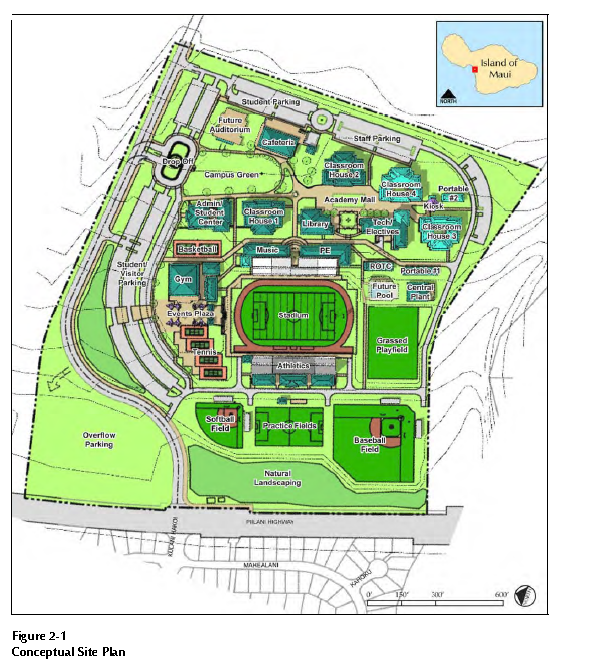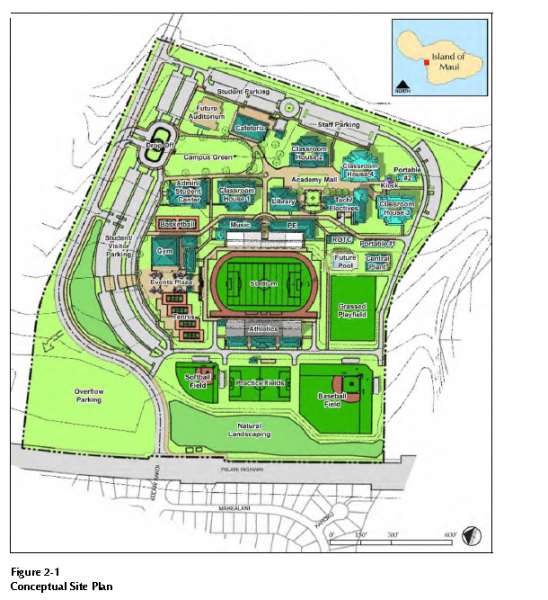 http://oeqc.doh.hawaii.gov/Shared%20Documents/EA_and_EIS_Online_Library/Maui/2010s/2011-12-23-DEIS-Kihei-High-School.pdf
http://oeqc.doh.hawaii.gov/Shared%20Documents/EA_and_EIS_Online_Library/Maui/2010s/2011-12-23-DEIS-Kihei-High-School.pdf
TMK: 2-2-2-002:081; 2-2-2-002:083
Permits Needed: Final EIS Acceptance, State Land Use District Boundary Amendment, County Change in Zone, Community Plan Amendment, Subdivision, Various Site, Grading, Building, and Infrastructure Approvals for Construction
Proposing Agency: State of Hawaiʻi, Department of Education,
Facilities Development Branch, P.O. Box 2360,
Honolulu, Hawaiʻi 96804.
Contact: Robert Purdie, Jr., (808) 586-0448
Accepting Authority: Governor, State of Hawaiʻi,
c/o Office of Environmental Quality Control
Consultant: Group 70 International, Inc.,
925 Bethel Street, 5th Floor, Honolulu, Hawaiʻi 96813
Contact: Christine M. Ruotola, (808) 523-5866
Status: 45-day comment period begins;
comments are due on February 5, 2012.
Send comments to the Proposing Agency and the Consultant above
The State of Hawaiʻi Department of Education proposes to develop a new high school in Kihei on approximately 77 acres of undeveloped land, mauka of Piʻilani Highway between Kulanihakoi and Waipuilani Gulches. Site improvements may include construction of educational buildings, library and media arts center, auditorium, cafeteria, administration facility, athletic buildings, and supporting structures. Outdoor athletic facilities may include outdoor play courts, athletic fields, a football/soccer/track stadium, and pool. Appropriately designed infrastructure will be incorporated into the project to support the campus facilities, operations, and occupants. Access to the proposed high school campus is planned via a new right-in right-out access road off Piʻilani Highway. The high school will be designed and constructed to meet or exceed USGBC’s LEED Silver certification or comparable rating system.
The project will result in positive economic impacts through employment opportunities in the construction and education fields. Construction of the high school will involve development of vacant land, minor loss of agricultural land, visual impacts to views from Piʻilani Highway, and short-term air and noise impacts. School operations will increase local traffic to and from the school, increase the demand for potable water and non-potable water, and require extension of potable water and wastewater infrastructure.





